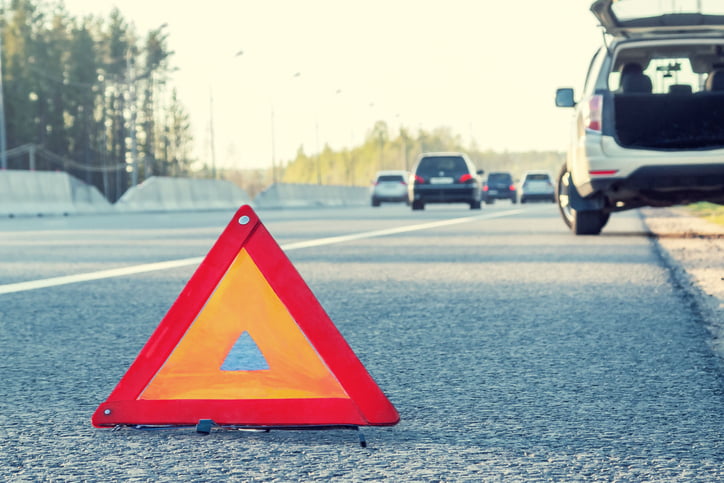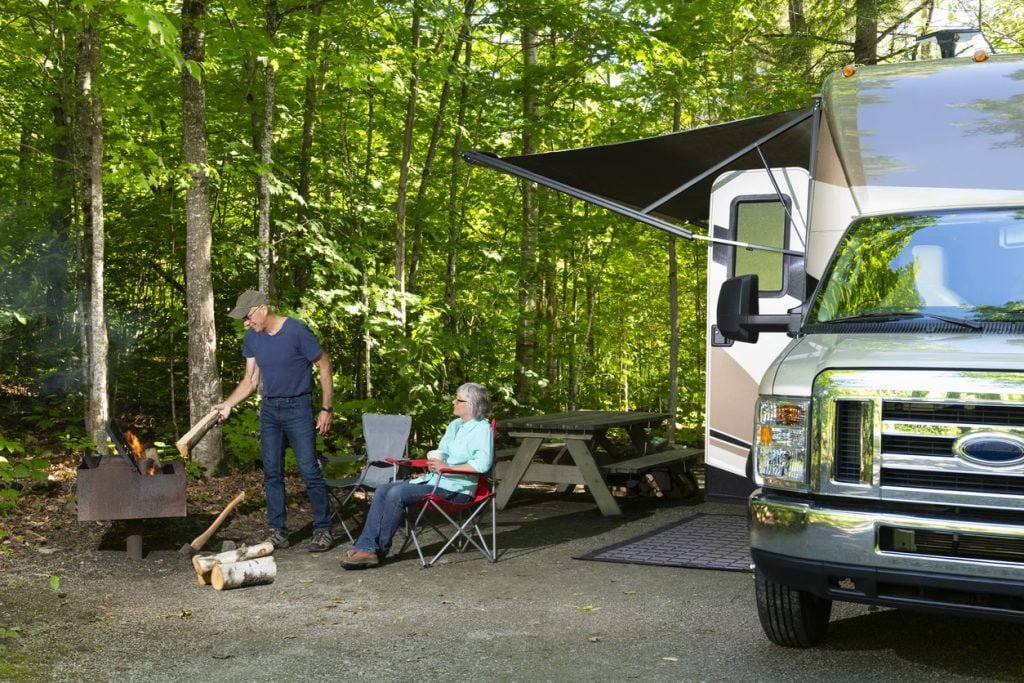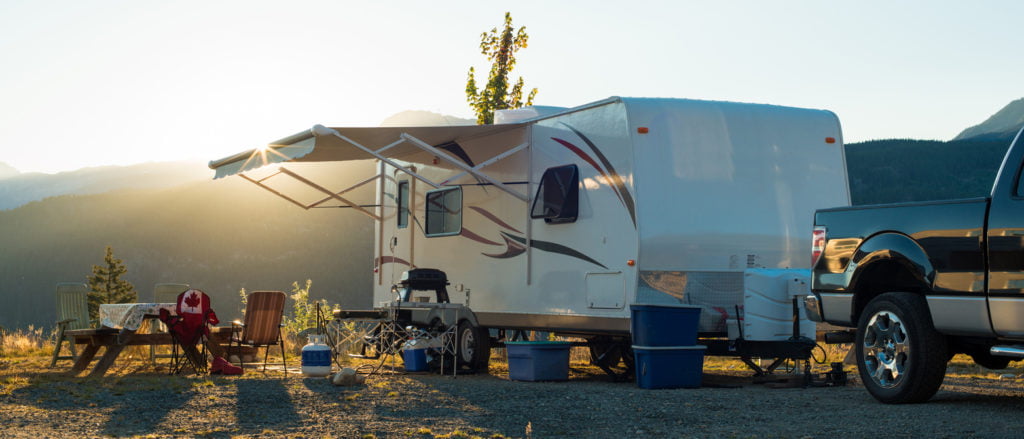A flat tire is one of the most common vehicular breakdowns. Whether on your tow-vehicle or RV, a flat is an experience that just about every driver will experience in their driving lifetime. Because of this, it’s important to consider what you are going to do about it and what options are available to you.
The tire must be changed, but where this flat occurs will dictate how you handle this job. If the tire has gone flat in the driveway of your home, then it’s an option to call someone or change it yourself. It’s also a safe location to work on your vehicle. Do not attempt a roadside fix if you get a flat on any roadway or a major highway like the 401. Changing a tire on the side of a busy road or highway has a dangerously high mortality rate that has killed many who attempt it, no matter how skilled.
Statistics previously shared by Transport Canada indicate that the rate of deaths from road-related accidents is one every four hours. They also add that most of these deaths occur on roads where the speed limit is higher than 60 km per hour. As most traffic-related incidents have increased with time, this statistic may be even more deadly at the time of writing today. This number represents all deaths from road accidents. Still, it is a well-documented fact that disabled vehicles parked on the side of the road have extraordinarily high rates of collisions. The mortality rate is equally high – as fixing your car or even waiting outside of it means you are without the protection it offers against other traffic.
Avoid this behaviour! Studies have shown that some drivers will unconsciously fixate on a stranded vehicle. The result is that they drive into it simply because hands, which are on the steering wheel, naturally follow your line of sight.
This type of accident often happens when motorists try to change a flat tire on a busy highway. Moving outside of your car for any reason is risky behaviour, even when fully on the shoulder with hazard lights flashing. It was a little before 4 P.M. on a clear, sunny afternoon near Dixon Road in Toronto, Ontario. A 53-year-old man driving alone along Highway 401’s westbound lanes pulled over to change a tire on the driver’s side of his car. As the man finished securing a jack underneath the vehicle, another car veered off the road and struck the man. Responding paramedics pronounced him dead on the scene a short time later.
An OPP spokesperson talking about this incident said, “Deaths like this can be easily avoided if people simply stay in their vehicle when pulled over on the highway. Sometimes [drivers] have no choice to pull over.” He added, “But they shouldn’t be getting out of their vehicle.”
He suggested that drivers and their passengers stay in the vehicle. At the same time, call for the help of police or a tow truck, adding: “It’s always good to stay in your vehicle until assistance arrives.” If you don’t feel safe in your vehicle, it’s best to get off the road entirely and onto the other side of a ditch or barrier while waiting.
Changing a tire on any street can be hazardous, but it’s practically suicide on a highway. In the case of a flat, park as far away as possible from the live lanes and call for help immediately. Stay in your vehicle – or if you feel unsafe, get out of the car. Make sure you are over the guardrail and stand well away from the highway. This plan of action is the recommendation from the police.
My personal take is that if the car is still relatively safe to drive a short distance, get off the road at the nearest exit. Yes, even with a flat tire. Put your hazard lights on. Make sure you stay near or on the shoulder and make your way carefully off the highway, even if it destroys the tire. The price of a new tire and rim may be the small price you pay for saving your life.
The best safety tip is always prevention so that you and your vehicle don’t get into this situation in the first place. All owners know that their cars, trucks and RVs travel on tires, yet for the most part, the main component: rubber, is ignored. Consider that studies have shown that most Canadian drivers run at least one under-inflated tire at all times. Why? Because so many other things occupy our minds and often times, tires don’t get the attention they deserve and require safe driving.
It’s true that tires are often damaged while in use and go flat due to on-road hazards and debris. However, the other most common cause of flats is driving on worn-out tires long past needing replacement.
Tires should also undergo frequent visual inspection. Replace tires with bumps, bulges, knots, exposed tread, and sidewall cuts deep enough to expose cords. The Ontario road safety handbook suggests you replace tires when the tread is less than 1.5 millimetres deep or when the tread-wear indicators touch the road. Vehicles that weigh more than 4,500 kg must replace their front tires when the tread is less than 3 millimetres deep.
Here’s a neat fact about winter or all-weather tires that you might not know:
While winter or all-weather tires are not required by law in most provinces (except in Quebec), they provide the best traction during the winter season and further protection from flats. At the same time, if you are running four winter tires, do make sure to take them off for the summer. The material that gives winter tires traction is a softer, stickier rubber that wears much faster than summer tires. Running them all year may also result in leaving you on the side of the road, and our goal is to keep you and your vehicle safe all-season round.




